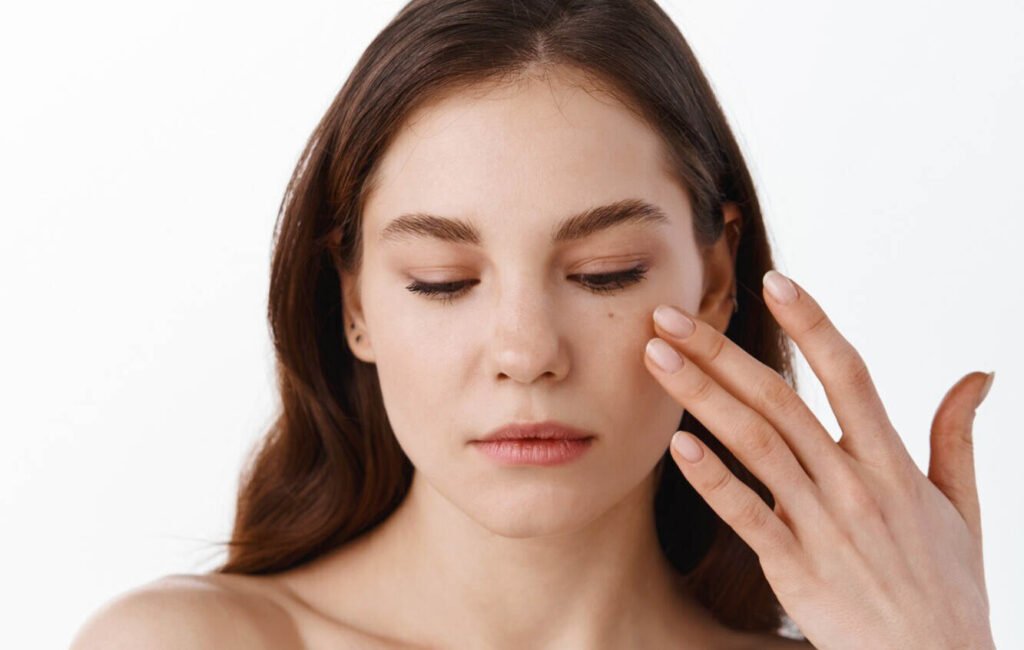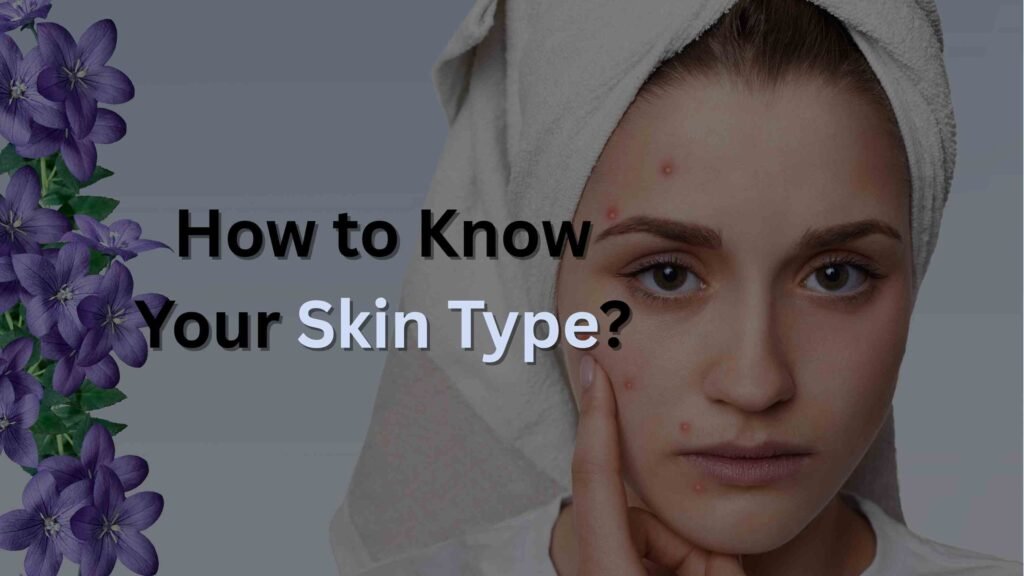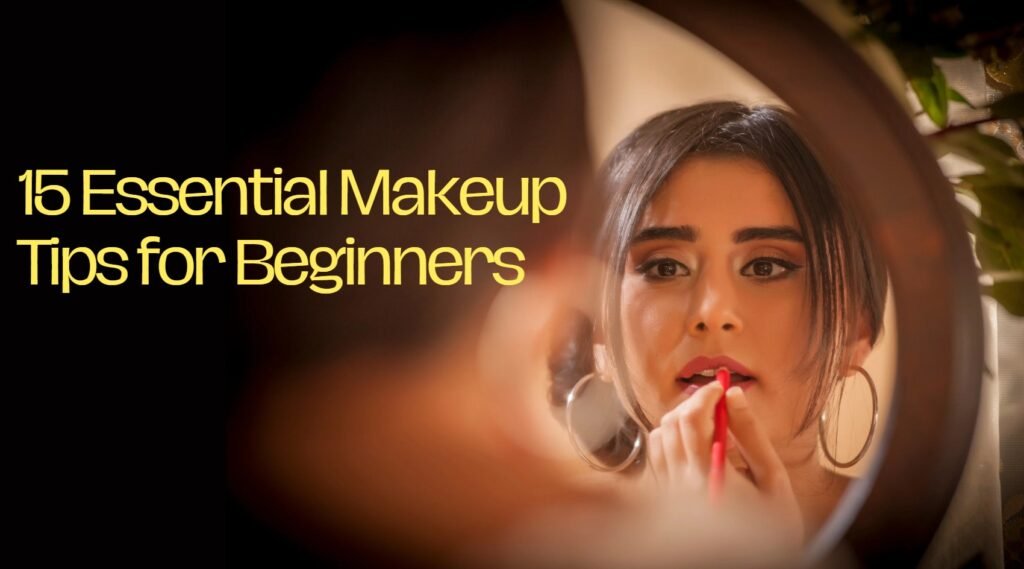Not sure which skincare products to choose? The answer is simple: know your skin type.
Ever stood in front of the mirror and you ask yourself why your skin goes through what it goes through? Trust me, you’re not alone! It may be a little bit about your skin type. So, let’s get into the nitty-gritty of skin types—dry, oily, combination and sensitive and see which one you fall under!
Why It’s Important To Know Your Skin Type
Before we get into the nitty gritty details of each skin type, let’s discuss why knowing your skin matters. Consider your skin as a canvas. How can you paint a masterpiece if you don’t know what kind of canvas you have?
When I first began my skincare journey, my biggest problem was the hundreds of products available. I used everything and anything from heavy creams to oil-free gels, but it didn’t help. It wasn’t until I made the effort to figure out my skin type that I discovered a routine that left my skin glowing.
As with many things, knowing your skin type helps you select the right products, skip irritation when possible and get the glow you’ve always wanted. So, let’s break it down!
How to Identify your skin type: Dry, Oily, Combination, Sensitive, acne-prone and Normal
Identifying your skin type is necessary for effective skin care aimed at it. All types have their own unique traits and requirements. Let’s go through the six different skin types so you are able to find your ideal routine for your skin!
1. Dry Skin: The Desert Dilemma

What It Feels Like
If your skin frequently feels tight, flaky or rough, you could experience dry skin. You just washed your face, and it feels like the Sahara Desert. Not fun, right?
Signs to Look For
- Flakiness: Skin that appears to be flaking off.
- Tightness: An incessant sensation of unease.
- Dullness: Not having that healthy glow.
Tips for Care
- Hydrate: Apply a creamy moisturizer containing hyaluronic acid, glycerin or ceramides to seal in moisture.
- Avoid Hot Showers: They rob your skin of natural oils. Choose lukewarm water instead.
- Use a Humidifier: A humidifier, especially in winter months, can be helpful in keeping the moisture in the air.
- Mild Exfoliation: Use a gentle exfoliant weekly to eliminate dead skin without irritation. This is a pro tip of skincare for dry skin.
2. Oily Skin: The Shine Factor

What It Feels Like
Are you applying blotting papers more times than you’d like? You may have oily skin if your skin feels greasy by mid-day. It’s just your face throwing a never-ending oil party!
Signs to Look For
- Shiny T-zone: Usually the greasiest of the three are the forehead, nose, and chin.
- Clogged pores: Hello, blackheads!
- Prone to breakouts: Oil-clogged skin is music to acne.
Tips for Care
- Use Oil-Free Products: Choose non-comedogenic products to prevent congestion.
- Exfoliate Regularly: It Prevents Excess Oil Production And Dead Skin. Try salicylic acid for a deeper clean.
- Blotting papers: Good for quick touch-ups during the day.
- Lightweight Moisturizers: Use gel-based moisturizers that can help to hydrate your skin without making it greasy.
3. Combination Skin: A Mix of Two Worlds

What It Feels Like
Combination skin can be like a roller coaster ride. One day your cheeks are crusty, and the next, your forehead is glistening like a disco ball at the end of a laser light show. It’s a mix of everything!
Signs to Look For
- Oily T-zone: Greasy forehead and nose.
- Dry patches: Flaky patches on the cheeks.
- Variable breakouts: Who knows what day it is, it depends on the day.
Tips for Care
- Balance Is Key: A gentle cleanser will not strip moisture from dry areas while controlling oil in the T-zone.
- To Target: Use one product for oily areas. Like a thicker moisturizer for dry cheeks and lighter for the T-zone.
- Moisturize Wisely: A lightweight moisturizer is the way to go. For oily areas, try a gel moisturizer; for dry ones, a cream.
- Exfoliation: Exfoliate the oily areas more often and keep it gentle for dry parts.
4. Sensitive Skin: The Tender Bloom

What It Feels Like
If your skin is irritated by everything—from changing weather and products to even stress—you may have sensitive skin. Your skin is like a diva and always wants to act!
Signs to Look For
- Blotchiness: Skin that flushes easily.
- Itching or burning: Unpleasant sensations.
- Reactions to products: Rashes or breakouts from new skincare.
Tips for Care
- Opt for Mild Products: Description must be gentle and clinical. Steer clear of products that contain alcohol, which can be drying and irritating.
- Patch Test: Before slathering that new product all over your face, do a patch test on a small area of your skin to see how it reacts.
- Soothing Elements: Search for ingredients such as aloe vera, chamomile, or calendula that may help alleviate redness and irritation.
- Limit Exfoliating: have to be a bit careful Uncross the exfoliation; use mild exfoliation and could apply like only once a week
5. Acne-Prone Skin: The Breakout Battle

What It Feels Like
If you’re always waging war with breakouts, you likely have acne-prone skin. It can seem like a vicious circle of trying to stave off those annoying spots.
Signs to Look For
- Frequent breakouts: Actual zits that appear out of nowhere.
- Oily patches: Usually symptomatic of oily skin.
- Scarring: Indentations or marks remaining after previous acne.
Tips for Care
- Use Non-Comedogenic Products: They will not clog your pores, which is fundamental to not induce acne.
- Add Salicylic Acid or Benzoyl Peroxide: These constituents, work to unclog pores while minimizing inflammation.
- Stick to a Routine: For optimal results, consistency is key. Taking care of acne is a long-term game.
- Do not pick: Refrain from picking on blemishes as that can cause scarring and more irritation
6. Normal Skin: A Skin jackpot

What It Feels Like
Normal skin is probably the most ideal skin type. It’s well balanced, not overly oily or dry, and tends to have a smooth texture. Normal skin is a skin type that usually has fewer problems and is generally tolerant of a variety of products.
Signs to Look For
- Balanced Texture: Skin is smooth and glows, but not shiny or dry.
- Minimal Breakouts: One may experience occasional blemishes but not common or serious ones.
- Small Pores: Pores are not widened and are normal in size
- Even Tone: Skin tone is even overall, without serious redness or discoloration.
- No Tight or Greasy Feel: Keeps skin comfortably hydrated.
Tips for Care
- Avoid Over-Cleansing: Use a mild cleanser to rid your skin of dirt without drying it out.
- Moisturization: A light moisturizer should be enough to keep everything hydrated without being heavy.
- Sunscreen: Use a broad-spectrum sunscreen every day, because normal skin may be susceptible to UV damage.
- Once in a while: Once a week, exfoliate to get rid of dead skin cells and allow the glow.
Find out what type of skin you have?
All right, now that we’ve established the basics, how do you determine your skin type? Here’s an easy at-home test you can conduct!
The Bare-Faced Test
Cleanse: Use a gentle cleanser to remove makeup and gunk.
Wait: For one hour, don’t apply any products to your skin.
Observe: Pay attention to your skin’s feelings as well as its appearance.
- Dry: If you have tight and flaking or dull-looking skin.
- Oily: When your skin looks shiny, often in the T-zone.
- Combination: If you see oiliness in the T-zone but dryness in various other areas.
- Sensitive: If your skin demonstrates either redness, irritation, or pain.
- Acne-Prone: If you experience regular breakouts or clogged pores.
Personal Experience
I will never forget when I figured out my skin type. At the time, I was in my early twenties, dealing with breakouts and dryness at the same time. It was like a hamster-habit cycle! After some experimentation, I learned that I had combination skin. A balanced skincare routine made all the difference. My skin has never looked better, and I finally found products that work for me!
Final words: Understand what skin type are you!
Now that you know the scoop on dry, oily, combination, sensitive, acne-prone and normal skin, it’s time to embrace your unique skin type! The key to finding skincare products and routines that work for you is knowing your skin.
So, which skin type are you? Do you have certain products that really work for you? Let us know in the comments!
And if this list was useful to you, please share it with your friends on Instagram or Pinterest. Perhaps, they are on a quest to identify their skin type!
FAQs
Can my skin type change with time?
Absolutely! Your skin type can change with factors like age, climate, and hormonal shifts. Every few months it’s healthy to reevaluate.
What products can irritate sensitive skin?
If you have sensitive skin, avoid well-scented products, those with alcohol and products with rough exfoliants. Always choose soothing, gentle ingredients.
How often should I exfoliate?
You typically want to exfoliate 2-3 times a week with oily skin. Once a week is usually sufficient for dry or sensitive skin. At last, Listen to your skin!



